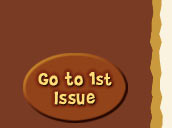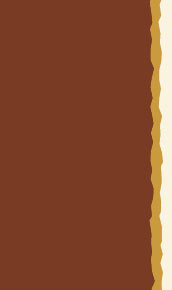It's kind of appropriate that any alphabetical review of the golden era (1968-73) of underground comics begins with Aardvark. In some ways, this seemingly innocuous two-issue series mirrors key evolutionary aspects of the underground movement. It also represents the way underground comics touched the lives of talented people in every corner of society, created rich personal histories, and can lead you on fascinating tangential discoveries in today's Internet age.
The two issues of Aardvark were published in 1970 and 1971
in Salt Lake City by David Faggioli when he was a college student at the University of Utah. Faggioli, a music major at the university, did not contribute artwork to either issue, but he put up the money to have them printed. Most of the contributors to the books were also Utah college students, though artists Al Davoren and Rob Brown were not. Davoren was the art director for the outstanding
Promethean Enterprises fanzine/magazine from 1969 to '74, for which Brown also contributed several pages of art.
Parley (Par) Holman and his brother Robert were two of the students who contributed to
Aardvark. Robert designed the cover art for the second issue and Par went on to a distinguished career in mini-comics in the late '70s and '80s. Michael Evans, who also provided art in both issues, has mentioned Faggioli in
a few of his blogs and wrote about
Aardvark for Dan Fogel's
Underground Comix Price Guide.
David Faggioli not only published
Aardvark, but also sold golden-age comic books to fund his college tuition and was an accomplished saxophonist in several bands, including a punk band called The Atheists (just imagine a punk band with a saxophonist!). He also was a member of a band called A Plague of Locusts and wore a lizard mask when appearing during
TV performances. Faggioli now owns one of the
premier vintage psychedelic poster shops on the internet from his home in Kihei, Hawaii.
On his way from Utah to Hawaii, Faggioli spent many years in Portland, Oregon, where he befriended members of the local music scene and collected rock posters.
As mentioned above, the two issues of
Aardvark seem like a microcosm of the history of underground comics.
Aardvark began as a newsprint tabloid paper with non-mainstream comic art (much like the
East Village Other or the
Berkeley Barb) and featured college-age cartoonists (like the college humor magazines in the '60s). But there was greater exposure to be gained (and more money to be made) in formal comic books, so Faggioli shifted into the comic book form for the next issue (just like so many underground comic creators shifted from the tabloids into comic books).
Aardvark also featured a group of young cartoonists looking for a place to see their work in print for the first time and were subsequently published in a comic book. Like so many underground creators, some went on to successful cartooning or art careers (Par Holman and the late Neil Passey), but most were scarcely heard from again. Yet here I am, over 40 years later, writing about them.
Aardvark, like many underground comics, was basically an amateur production, but the underground's non-conventional form attracted some talented creators who wanted to jump in on the scene. I imagine that even those who were never heard from again are glad to have gone along for the ride, whether it was with
Aardvark or with the hundreds of books that are presented on this site after the first one in the alphabetized library.





















